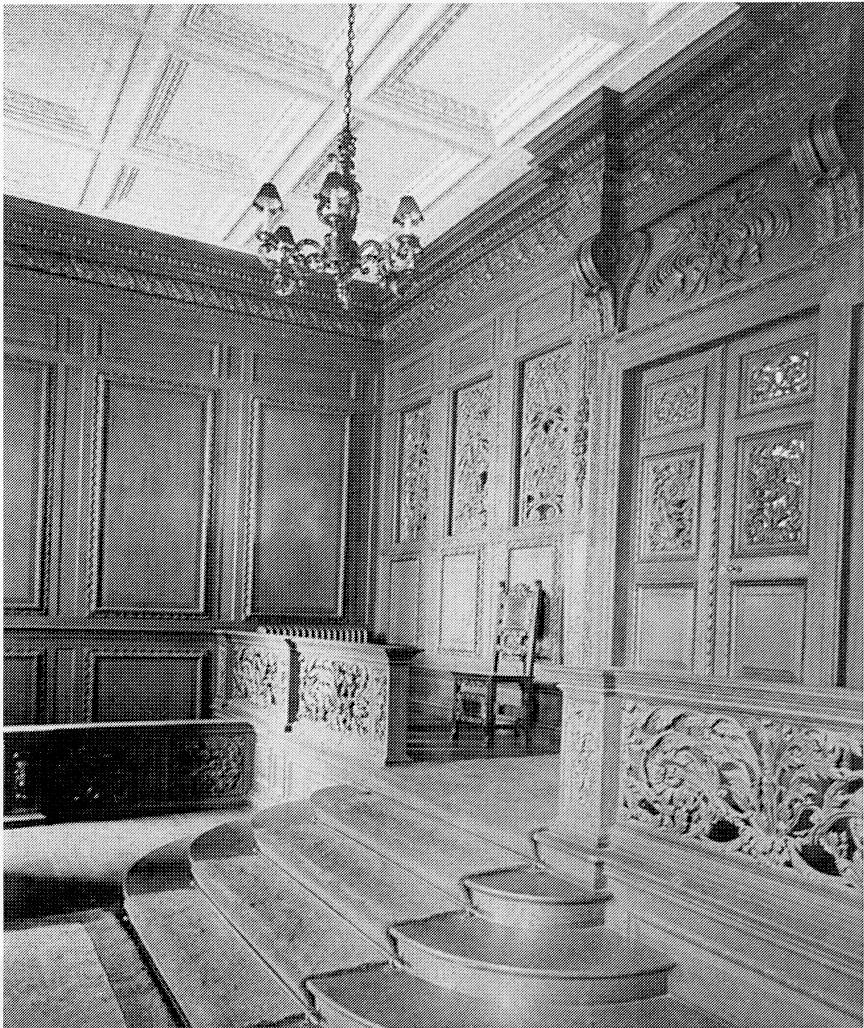The Building alterations
As soon as the purchase had been completed, the architects Messrs Marshal Mackenzie and Sons were commissioned to draw up plans for extending and modernising Hursley Park House. (Mr A G B Mackenzie was a nephew of Mr Cooper, and so the choice was not unexpected.) Almost immediately, the builders Messrs. Parnell and Sons of Rugby started work.
At the peak of activity, nearly 400 skilled workmen were on site. While the building was in progress, the Coopers used Northend House in Hursley village, to be near the site at important times.
Of the people and firms commissioned for work on the house, the best known are: Sir Joseph Duveen (responsible for the ballroom architecture); Messrs Martin (the woodwork); Messrs Mallet and Sons (gold and silver smiths); and Messrs White and Allom (artist decorators). Of all the firms and craftsmen employed, only one group were not English; they were the company of five gilders who came over from France, and who left a note behind the panelling with their names and the date 24th August 1904.
 Main hall vestibule, 1909
Main hall vestibule, 1909
As previously mentioned, the extensions involved adding wings to the east and west ends, a domed conservatory (or winter garden), a porte—cochere (complete with a mounting stone to lessen the problems when mounting a horse) and the garage and coal store (Block S today). The wings increased the length of the house to 193 feet (58 m) excluding the conservatory and extended 107 feet (32 m) from north to south. Every possible care had been taken to ensure that the two wings, porte-cochere and conservatory were in keeping with what was already a fine country house ~ not only in style but in materials. Cost, however great, was no obstacle. Because of the care and money spent in attempting to match the new extensions to the older architecture, a study has to be made of the house before labelling the centre portion eighteenth century, as the total effect is so very Edwardian. At this time, the house was equipped with a coal-fired central heating system requiring a coal store of some 100 tons. The coal store and garages (holding up to eight cars) were built with a flat roof so that they could hardly be seen from the house. The house was also equipped with DC electric lighting; the electric generators (driven by two Crossley engines) and accumulators were sited at the Home Farm.